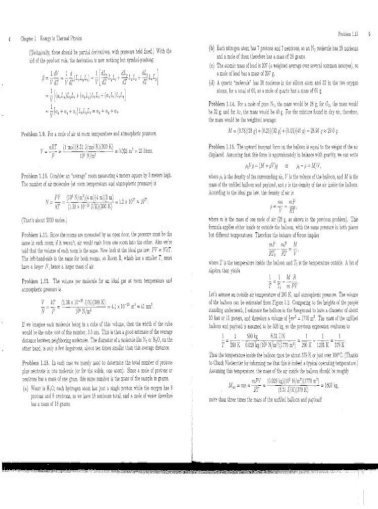

Shin'ichirō Tomonaga, Julian Schwinger and Richard Feynman were jointly awarded with the 1965 Nobel Prize in Physics for their work in this area.
#AN INTRODUCTION TO THERMAL PHYSICS SCHROEDER SOLUTIONS SERIES#
This procedure was named renormalization.įeynman (center) and Oppenheimer (right) at Los Alamos.īased on Bethe's intuition and fundamental papers on the subject by Shin'ichirō Tomonaga, Julian Schwinger, Richard Feynman and Freeman Dyson, it was finally possible to get fully covariant formulations that were finite at any order in a perturbation series of quantum electrodynamics. In this way, the infinities get absorbed in those constants and yield a finite result in good agreement with experiments. The idea was simply to attach infinities to corrections of mass and charge that were actually fixed to a finite value by experiments. Despite the limitations of the computation, agreement was excellent. While he was traveling by train from the conference to Schenectady he made the first non-relativistic computation of the shift of the lines of the hydrogen atom as measured by Lamb and Retherford. These experiments exposed discrepancies which the theory was unable to explain.Ī first indication of a possible way out was given by Hans Bethe in 1947, after attending the Shelter Island Conference. Improvements in microwave technology made it possible to take more precise measurements of the shift of the levels of a hydrogen atom, now known as the Lamb shift and magnetic moment of the electron. With no solution for this problem known at the time, it appeared that a fundamental incompatibility existed between special relativity and quantum mechanics.ĭifficulties with the theory increased through the end of the 1940s. At higher orders in the series infinities emerged, making such computations meaningless and casting serious doubts on the internal consistency of the theory itself. However, further studies by Felix Bloch with Arnold Nordsieck, and Victor Weisskopf, in 19, revealed that such computations were reliable only at a first order of perturbation theory, a problem already pointed out by Robert Oppenheimer. In the following years, with contributions from Wolfgang Pauli, Eugene Wigner, Pascual Jordan, Werner Heisenberg and an elegant formulation of quantum electrodynamics by Enrico Fermi, physicists came to believe that, in principle, it would be possible to perform any computation for any physical process involving photons and charged particles. ĭirac described the quantization of the electromagnetic field as an ensemble of harmonic oscillators with the introduction of the concept of creation and annihilation operators of particles. The first formulation of a quantum theory describing radiation and matter interaction is attributed to British scientist Paul Dirac, who (during the 1920s) was able to compute the coefficient of spontaneous emission of an atom.


 0 kommentar(er)
0 kommentar(er)
